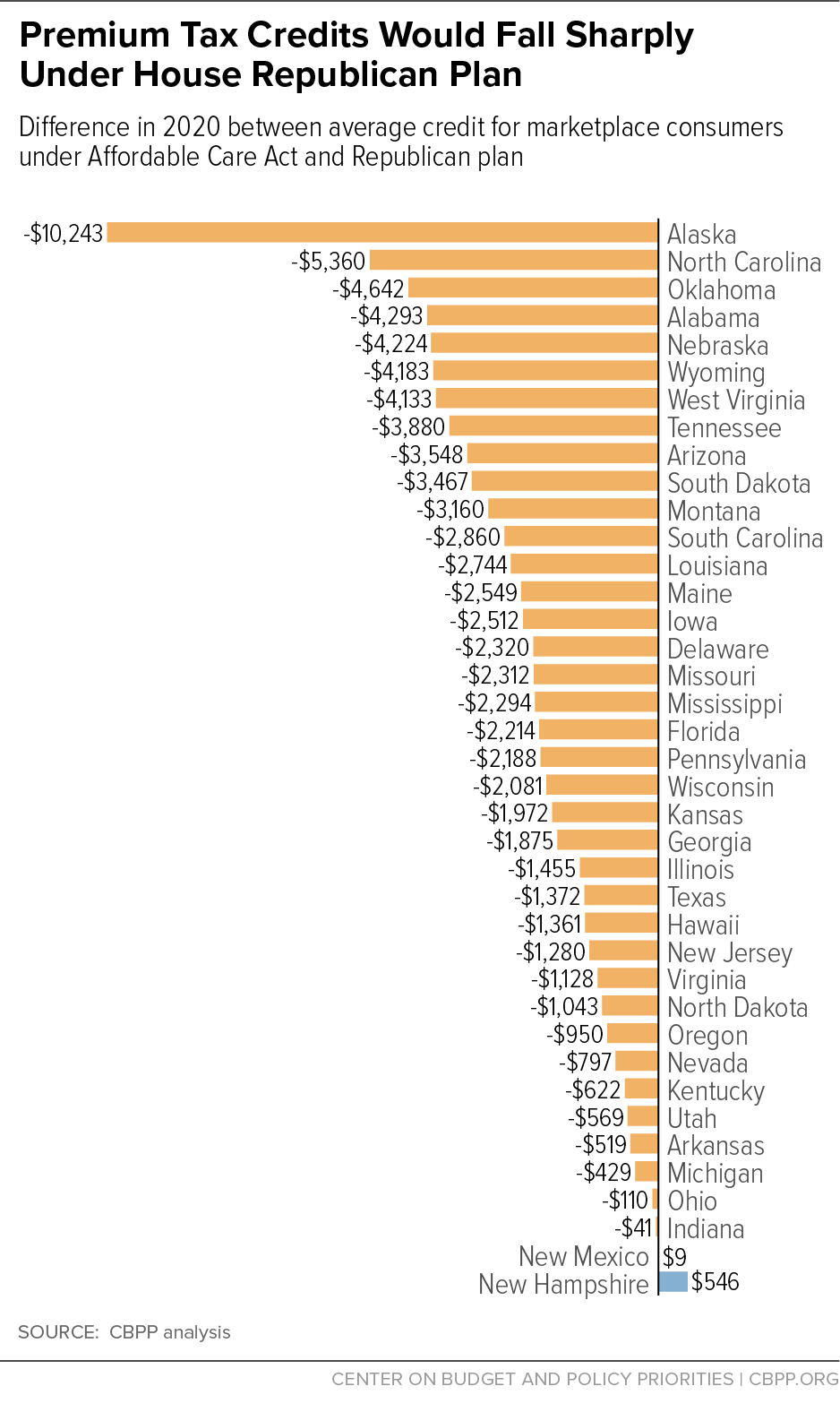On Monday night, House Republicans finally released their plan to replace the Affordable Care Act. The new Affordable Health Care Act eliminates the ACA’s cost-sharing subsidies for low-income people and replaces Obamacare’s premium credits with flat tax credits that increase only with age. The plan has not yet been officially scored by the Congressional Budget Office, but experts are predicting it will result in a steep drop in the insured rate, particularly among certain demographics. The Kaiser Family Foundation predicts that “people who are older, lower-income, or live in high-premium areas (like Alaska and Arizona) receive larger tax credits under the ACA than they would under the American Health Care Act replacement.”
The AHCA is already drawing fire from ultra-conservatives, moderates, and health-care industry groups; a new report from the Center on Budget and Policy Priorities, a liberal think tank, highlights another constituency that might have reason to dislike the plan: people living in high-cost health insurance states.
Under the ACA, the value of the credits that any given consumer receives to purchase health insurance is dependent on both that consumer’s income and the cost of a silver-level health insurance plan in their state — low-income consumers in high-cost states receive larger credits than their counterparts in low-cost states. Under the GOP’s replacement plan, however, the tax credits are the same across states. Here’s the CBPP on what that means in practice:
To illustrate the difference, consider net premiums and tax credits under the ACA versus under the House plan for a 45-year-old with income of $22,000 living in Alaska, the highest-cost state; Wyoming, the fifth highest-cost state; and Indiana, the fifth lowest-cost, supposing each consumer faces the average benchmark premium in her state. Under the ACA, consumers at this income level pay 5.38 percent of income for benchmark coverage, or $1,200 per year. Premium tax credits make up the rest: $14,000 in Alaska, $6,900 in Wyoming, and $3,300 in Indiana. In contrast, under the House plan, all three consumers would receive tax credits of $3,000. That leaves the Indiana consumer paying the remaining $1,500 in annual premiums — an increase compared to current law, but a small one compared to the Wyoming consumer, who would face a net premium of $5,100 after tax credits, or the Alaska consumer, who would pay $11,800 (assuming no changes in pre-credit premiums).
This feature of the AHCA could have major consequences for people in high-cost states . The chart below, from the CBPP analysis, illustrates how tax credits would change in different states by 2020:

It’s worth noting that many of the hardest-hit states on this chart are rural states—the very places that voted overwhelmingly for Donald Trump in 2016.




